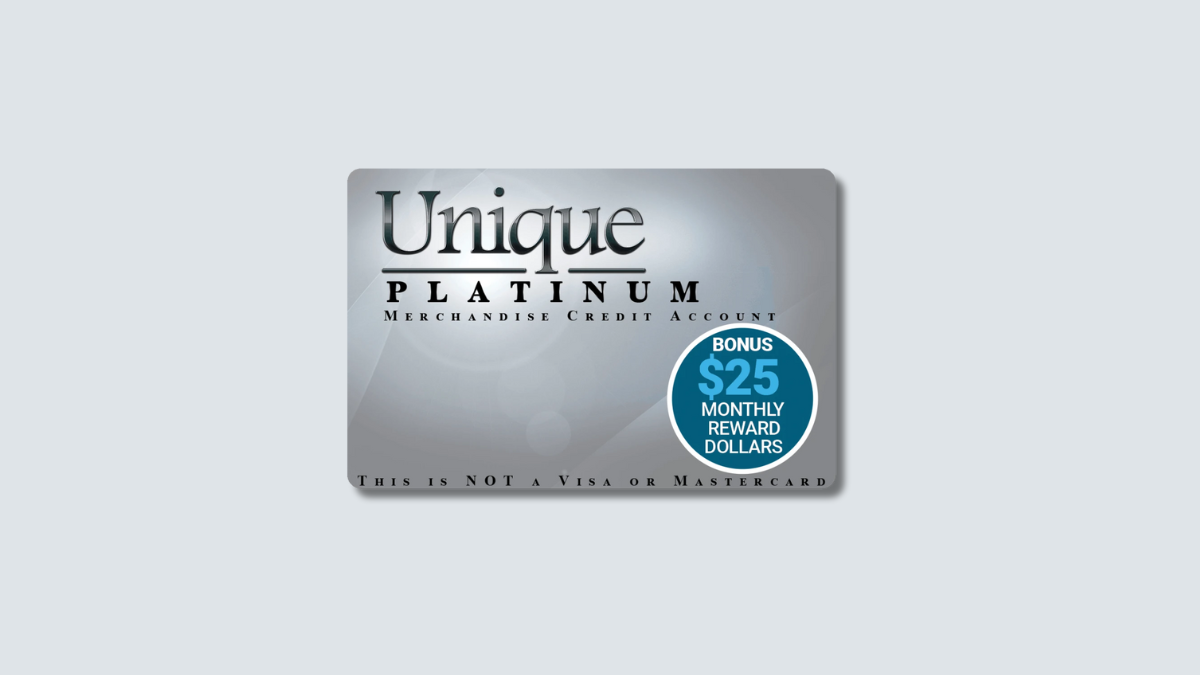Apply for the Unique Platinum: All online, all simple!
Unlock the possibilities with Unique Platinum – apply now for seamless online access! Dive into the MyUnique Outlet shopping universe!
Credit Cards
Unique Platinum Review: up to $1,000 credit account!
Discover financial freedom with our Unique Platinum Review. Unleash up to $1,000 extra for your budget and explore exclusive benefits!
Keep ReadingFinances
8 Different Types of Credit Cards
Find your ideal match with our comprehensive overview of the different types of credit cards, designed for all needs and spending habits.
Keep ReadingLoans
Pheabs Loans Review: Fast, Flexible Lending
Our Pheabs Loans review reveals fast funding and no service fees, perfect for diverse credit histories and urgent financial needs.
Keep ReadingYou will be redirected to another website
You’ll receive messages for less than 1 week, with a maximum of 1 message per day. You can unsubscribe anytime by replying STOP. By submitting this form, I confirm that I am 18+ years old and agree to the Privacy Policy and Terms and Conditions. I also provide my signature, giving express consent to receive informational messages via automated emails, SMS, MMS text messages, and other forms of communication. Message frequency may vary as part of our good-faith effort to respond to your inquiry. Message and data rates may apply. Text STOP to cancel. I understand that my consent to receive communications is not a condition of purchase and that I may revoke my consent at any time.
Apply for Pheabs Loans: Fast Cash for Urgent Needs
Learn how to apply for Pheabs Loans and get quick, easy access to funds with flexible repayment options, ideal for any financial need.
Trending Topics

Buy on Trust Review: Lease Easily, Own Smoothly
Explore our Buy on Trust review to learn how to access flexible leasing options and top-brand electronics with easy online approval.
Keep Reading
Apply for Buy on Trust: Fast, Flexible Leasing
Learn how to apply for Buy on Trust and take advantage of easy access to a wide range of top-brand electronics with adaptable payments.
Keep Reading
What Are the 3 Credit Bureaus? How Do They Work?
Discover what the 3 credit bureaus are and how they impact your financial health. Learn about their roles in credit reporting and scoring.
Keep ReadingTrending Authors
CashNetUSA Review: Fast Loans for All Credit Types
Explore our CashNetUSA review for instant loan decisions and same-day deposit. Ideal for quick funds, even with less-than-perfect credit.
Apply for CashNetUSA: Swift, Easy Loan Access
Learn how to easily apply for CashNetUSA with our guidance for quick, user-friendly loan processing and responsive customer support.
LoanPioneer Review: Streamlined Loans
Our LoanPioneer review highlights fast loan approvals and extensive lender choices, perfect for diverse financial situations up to $5,000.
Keep ReadingApply for LoanPioneer: Diverse Loan Types
Learn how to apply for LoanPioneer and have access to easy loans up to $5,000 with flexible purposes and a simple online process.
Keep ReadingApply for Electro Finance: Swift Access to Tech
Learn how to apply for Electro Finance for instant electronic access and same-day pickup at Best Buy, simplifying your tech purchases.
Keep ReadingElectro Finance Review: Easy Lease Approval
Explore our comprehensive Electro Finance review for easy leasing and bad credit support, offering quick approval and flexible terms.
Keep ReadingCreditFresh Review: Easy Access to Funds
Read our CreditFresh review to discover easy online applications, and transparent billing, simplifying your borrowing experience.
Keep ReadingApply for CreditFresh: No Hidden Charges
See how to apply for CreditFresh for swift approval and zero origination fees. Get easy access to funds up to $5,000 with transparent terms.
Keep Reading